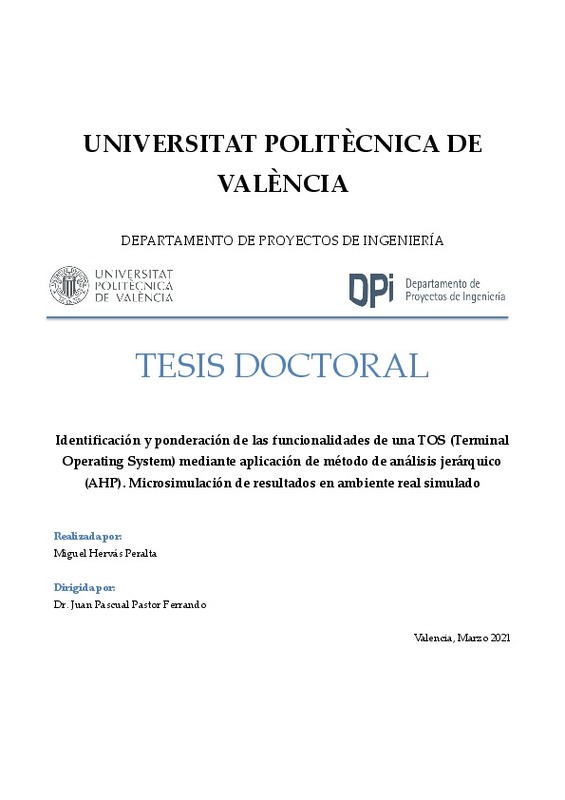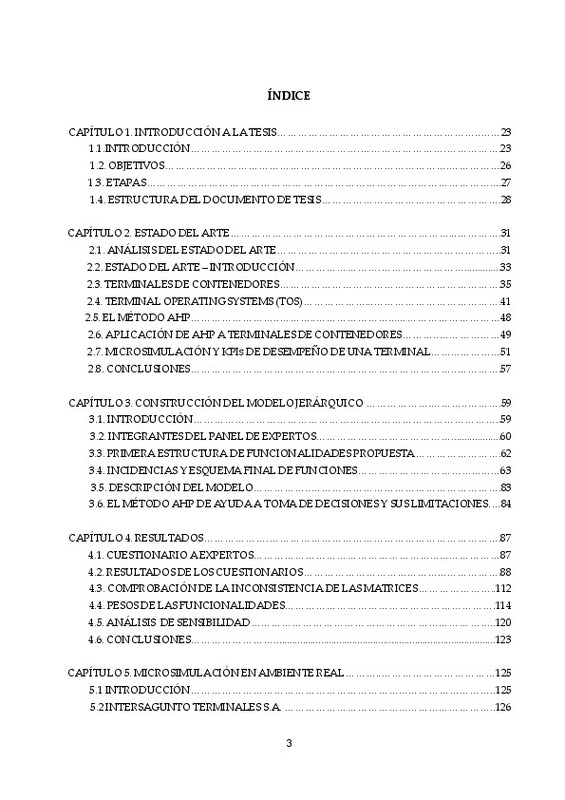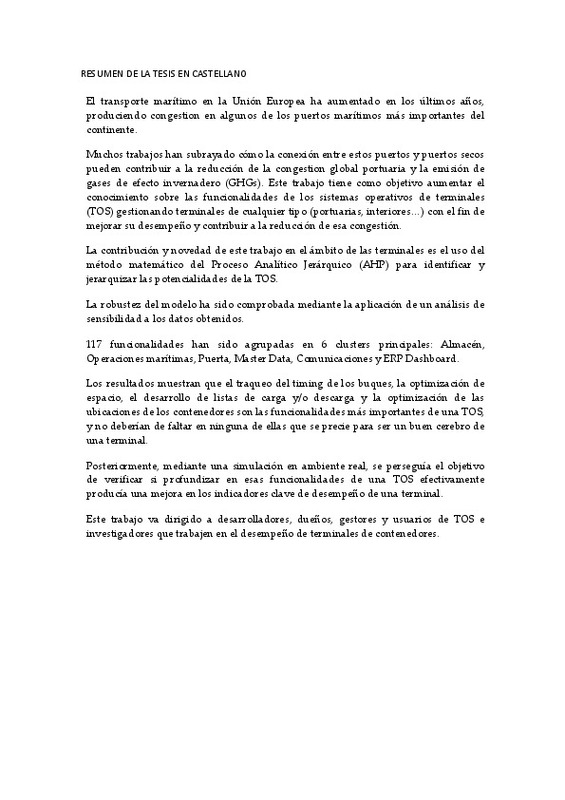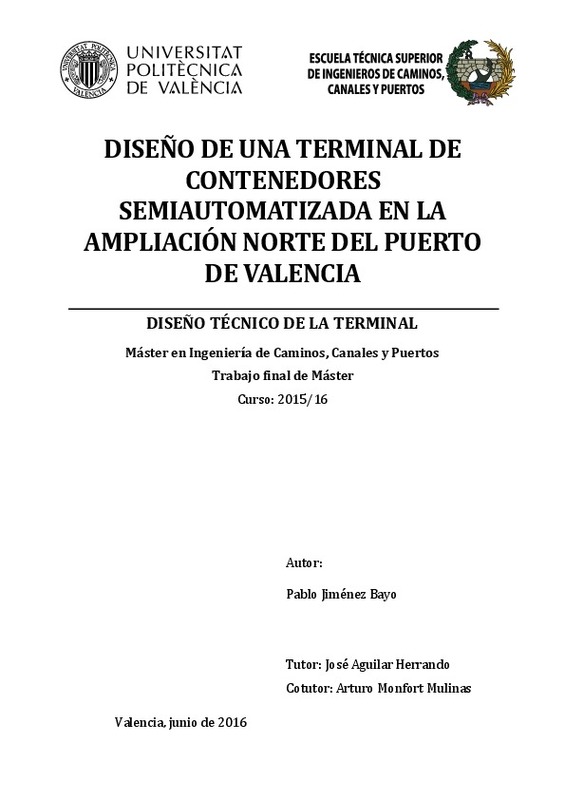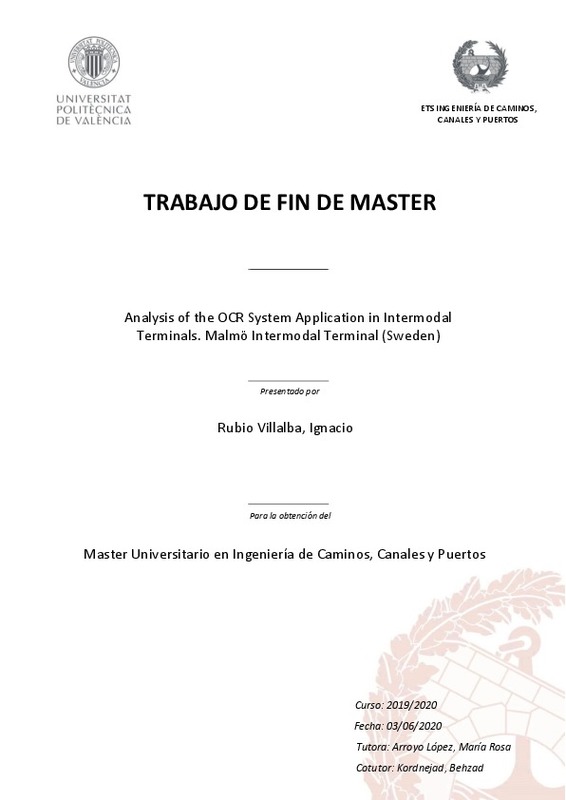- RiuNet repositorio UPV
- :
- Investigación
- :
- Tesis doctorales
- :
- Ver ítem
JavaScript is disabled for your browser. Some features of this site may not work without it.
Buscar en RiuNet
Listar
Mi cuenta
Estadísticas
Ayuda RiuNet
Admin. UPV
Identificación y ponderación de las funcionalidades de una TOS (Terminal Operating System) mediante aplicación de método de análisis jerárquico (AHP). Microsimulación de resultados en ambiente real simulado
Mostrar el registro completo del ítem
Hervás Peralta, M. (2021). Identificación y ponderación de las funcionalidades de una TOS (Terminal Operating System) mediante aplicación de método de análisis jerárquico (AHP). Microsimulación de resultados en ambiente real simulado [Tesis doctoral]. Universitat Politècnica de València. https://doi.org/10.4995/Thesis/10251/171470
Por favor, use este identificador para citar o enlazar este ítem: http://hdl.handle.net/10251/171470
Ficheros en el ítem
Metadatos del ítem
| Título: | Identificación y ponderación de las funcionalidades de una TOS (Terminal Operating System) mediante aplicación de método de análisis jerárquico (AHP). Microsimulación de resultados en ambiente real simulado | |||
| Autor: | Hervás Peralta, Miguel | |||
| Director(es): | ||||
| Entidad UPV: |
|
|||
| Fecha acto/lectura: |
|
|||
| Resumen: |
[ES] Este trabajo tiene como objetivo aumentar el conocimiento sobre las funcionalidades de los sistemas operativos de terminales (TOS) gestionando terminales de cualquier tipo (portuarias, interiores) con el fin de mejorar ...[+]
[CA] Aquest treball té com a objectiu augmentar el coneixement de les funcionalitats de les TOS gestionant terminales de qualsevol tipus (portuaries, interiors) amb la fi de millorar el seu acompliment i contribuir a la ...[+]
[EN] This work aims to improve the knowledge about the functionalities of Terminal Operating Systems (TOS) managing container terminales of sea, river, and dry ports, with the aim of improving their performance and ...[+]
|
|||
| Palabras clave: |
|
|||
| Derechos de uso: | Reserva de todos los derechos | |||
| DOI: |
|
|||
| Editorial: |
|
|||
| Tipo: |
|
recommendations
Este ítem aparece en la(s) siguiente(s) colección(ones)
-
Tesis doctorales [5399]






